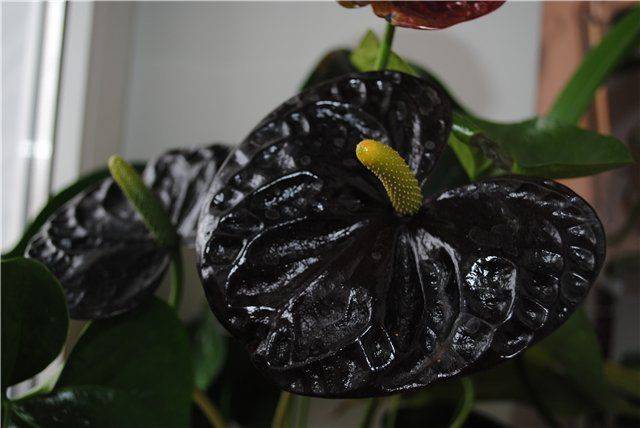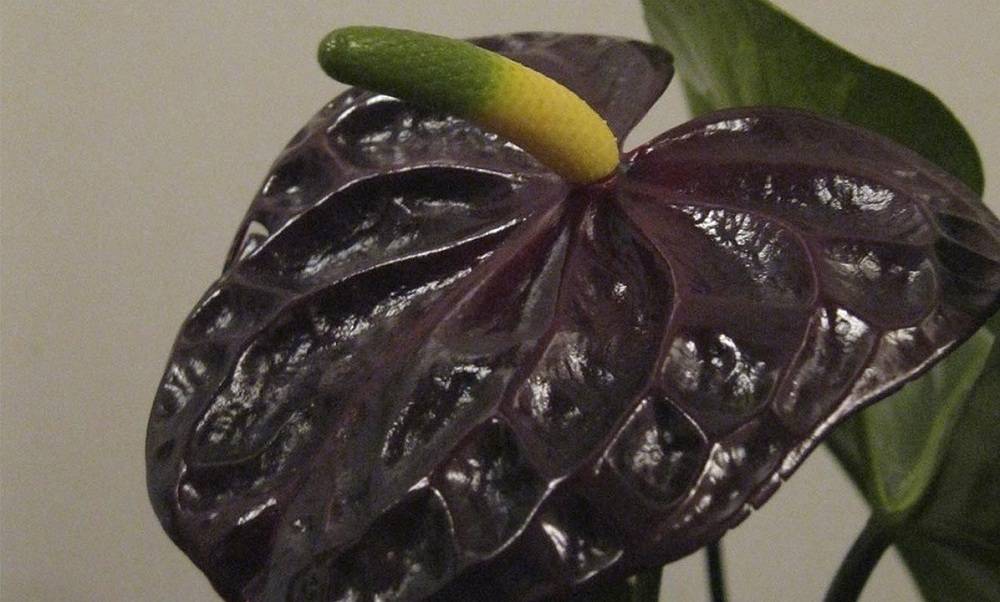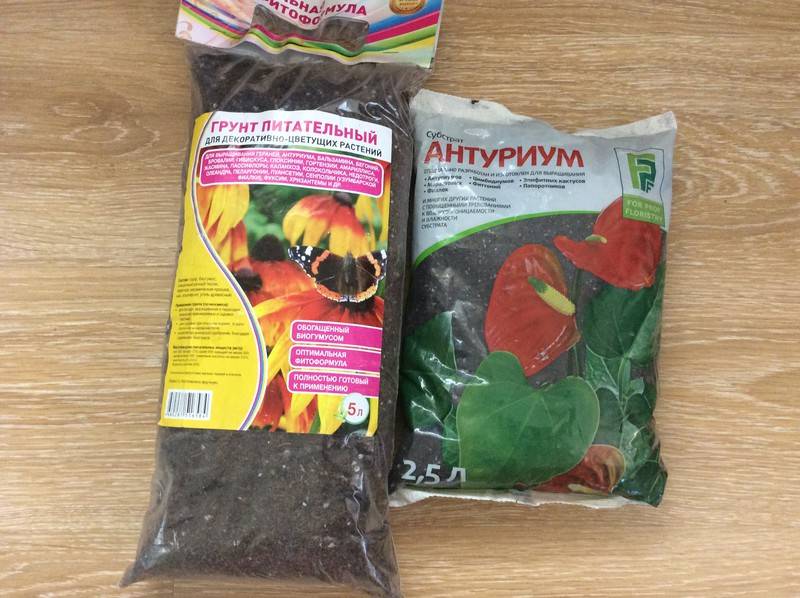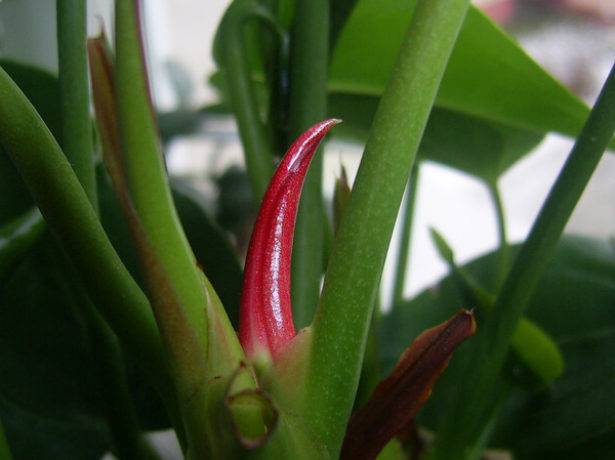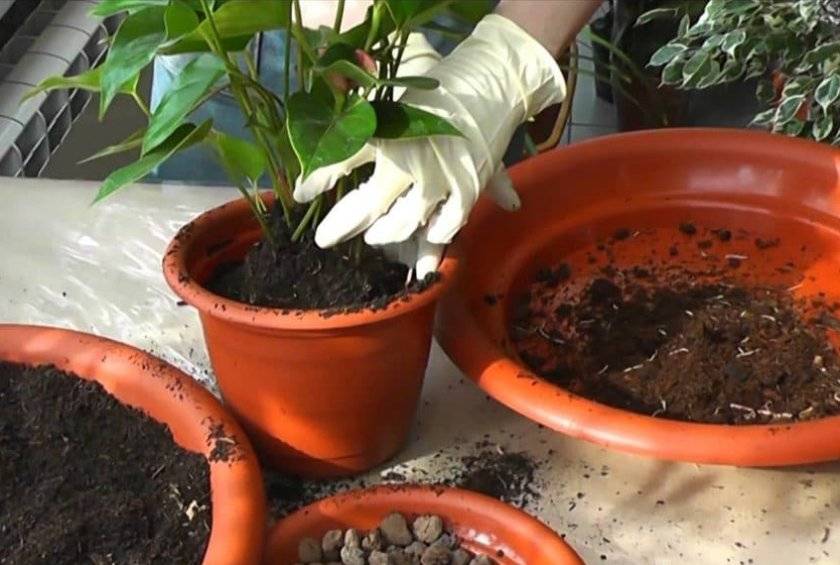Anthurium Black - description and varieties
Content:
Flowers of the Aroid family of the genus Anthurium, with their unusual heart-shaped shape, fascinate and attract attention. There are more than 800 species of this genus, among them the black anthurium flower stands out with its original color. More details about these flowers will be discussed later.
What does black anthurium look like: varieties
There are many varieties of this type. Next, a description of the most popular will be given.
Black Love
It grows in the form of a shrub that can reach a height of half a meter indoors. The leaves have a bright dark green color, the bud itself first grows in a beige shade, however, when it blooms completely, it transforms into a different color. Anthurium Black Love at the time of flowering turns into a maroon color. Thanks to the shape of the heart, the flower got the romantic name Love.
Black Beauty
This variety is more difficult to meet than any other. Its main difference is in its shape, which looks like a tulip. The leaves are dark green with a burgundy streak. The flower itself, just like the previous one, with flowering changes its color from maroon turns into black. Anthurium Black Beauty at home can grow up to 65 centimeters.
Black queen
The difference with the rest is in the red color of the buds and bedspreads. Lovers of home plants appreciated this variety for the beauty of green leaves that do not lose color and brightness at any time of the year, and flowers of deep red color.
Black Prince
Anthurium Black Prince is refined and graceful, it stands out from other home colors, creating a bright accent in the interior. The plant can grow up to 1 meter, delighting the owner with its brightness and noble appearance. Prince lives up to its name 100%.
Features of home care
In order for these varieties to please with their healthy and beautiful appearance, it is necessary to provide them with thorough care.
Temperature
This kind of flowers loves warmth. In the warm season, he feels good at temperatures of + 20-25 degrees. In the autumn, the temperature is lowered to 12-15 degrees, so the flowers are smoothly transferred to winter.
Lighting
Anthurium should not be kept in direct sunlight. To make him feel comfortable, he is placed on the windowsills on the west or east side of the housing. If this is not possible, then you can darken the window or move the flower during the day.
Watering
Adult plants are watered abundantly as the upper part of the soil dries, the young flower is watered more often. The average amount is 2-3 times a week. Water should be done without touching the plant with water (water on the buds can form brown spots), using warm, clean water.
Humidity
These plants love moisture, especially during hot weather. During this time, they should be sprayed and given a warm shower. You can also place a container of water next to it to increase air humidity.
In addition to the above methods, to ensure moisture for the plants, they resort to covering the stems with moss, which are sprayed periodically.In addition, you can put flowerpots with bushes on a pallet with wet gravel and expanded clay.
Priming
Ready-made soil compositions are available for sale.
But you can prepare the soil yourself, for this you need to mix the following ingredients:
- charcoal;
- coarse sand;
- pine bark (medium sized pieces);
- sphagnum moss;
- humus;
- leafy land.
Take 1 part of each component. You also need to add drainage.
Top dressing
Fertilizing the plant must be done from March to September so that it pleases with its beautiful and healthy appearance. During this period, the plant is fed once a week.
It is preferable to choose ready-made dressings:
- Forte includes magnesium and succinic acid.
- "Bona Forte" No. 1 or No. 2. It is a complex of mineral and organic fertilizers.
They are used for watering and spraying according to package directions.
You can also prepare the solution at home yourself. To do this, use one of the following recipes:
- a teaspoon of sodium sulfate in 2-3 liters of water;
- a teaspoon of "Agroschool for flowering plants" for 2 liters of water;
- 0.5 liters of fermented mullein per 10 liters of water.
It is worth watering with different fertilizers in turn.
When and how it blooms
If the plant is well looked after, then it can bloom regularly, usually from March to November. By winter, it goes into hibernation.
The bud can grow from the center of the shoot, from the side. At first, it looks like an arrow, differing from the leaves in color. It will take a long time to grow a flower. The next stage is opening: the pistil is shown, and after a few days the bud opens completely.
Pruning
Pruning should be done in early spring, thereby rejuvenating adult plants. Lateral and apical stems can be used for propagation.
Pruning steps:
- Remove the dead bottom leaves.
- Faded buds are cut off.
- Lateral stems are separated with part of the root system. This should be done with extreme caution.
- Cut off the tops of the stems.
By transplanting plants, they also get rid of rotten and dry roots.
How black anthurium reproduces
Reproduction by cuttings and lateral stems is possible.
Cuttings
This method is simpler, it includes the following steps:
- Lateral shoots with roots are separated.
- These shoots are transplanted into a separate container.
- The apical stems with 2-3 internodes are cut off for grafting.
- In a wide container, the cuttings deepen by 1 centimeter.
- The greenhouse is covered with foil;
After a month, the bushes can be transplanted into pots.
Seeds
Seed propagation is more difficult. In addition, hybrid plants do not transmit their traits to the seed.
Seed transplantation includes the following steps:
- The seeds are soaked in a manganese solution. Germination can be carried out on wet foam rubber.
- After that, the seeds are distributed on the surface of a moist substrate in greenhouse conditions.
- After a month, they are transferred to containers with water for germination.
Transfer
Young plants should be replanted once a year. Adults transplant when the roots have filled the pot, about once every 2-3 years. They carry out transfer work in the spring, using the transfer method.
Stages:
- The pot is placed sideways
- Carefully get a plant with an earthen lump
- Rotten roots are removed
- The crushed coal is sprinkled over the cuts.
- The root is carefully placed in a new pot, the roots are laid evenly.
- The remaining space is filled with soil.
- The soil is slightly compacted from above.
- Moss is laid next to the leaves.
Diseases and pests
From an excess of water, insufficient lighting, drafts, rot can affect the stems, while the leaves become moldy. To save the flower, pruning is carried out, and the plant is transplanted into new soil.
Spraying with fungicides will help from the appearance of yellow spots on the leaves. They also regulate watering and lighting, remove the flower away from others until complete recovery.
For the purpose of prevention, once a season, you can use phytosporin-1, which is able to drive out pests and protect the plant from infections.
Black Anthurium is a beautiful and noble flower that will delight with its flowering all year round. But to get a flowering plant you will have to try. Care is very important for the health of the plant. It will require a lot of effort, but if you do everything right, then anthurium can decorate any home.
